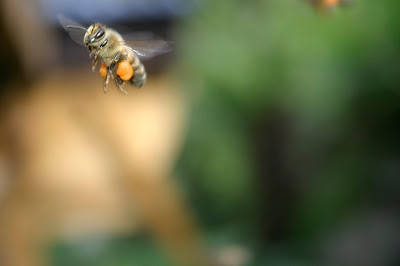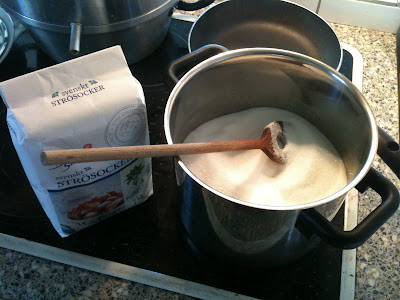Let me share my thoughts with you;
My neighbour beekeeper which is also our local bee inspector who's bees I bought this year overwinters every year a few small splits on ONLY 2 combs.
This last winter was extremely long for this locality and cold and damp. Yet his small colonies survived the winter growing into strong colonies this year.
He told me not to worry about how many bees I have in the colony but ONLY to make sure the colony has YOUNG bees. The colony needs young bees which can live long.
He will try this year for the first time to overwinter a couple of Queen mating cassettes which have only one tiny comb and a handful of bees with a young Queen in it. He never tried this before and I'm looking forward to see what will happen.
Even though if this fails I'm still reassured by his example of overwintering small splits on 2 combs. Sure he does have 3 small colonies per one box/super which are divided by plywood wall, but still each has its own entrance and each cavity will have the same temperature around the bee cluster so saying that they heat each does not hold water. All they need is protection from the chilling winter winds.
The less bees - less mouths to feed - less stores needed, yet same heat output. Maybe different clustering method than the larger colony but this has to be observed. The fact stays that bees do survive long cold winters on 2 combs.
I am starting to wonder about how much stores do colonies really need if not managed by the beekeeper.
If small colonies can overwinter on 2 combs than why do we repeatedly hear beeks saying that colonies need 20 kg of stores to get them through the winter?
In this case I would like us to look at two colonies:
1. managed by the beekeeper
2. not managed by the beekeeper
The one managed is the one where beekeeper expands the colony body by supering, nadiring, spacing
and the other one is left to build as many combs as they feel they need.
From my quote above you can see that it is possible for a small colony to survive on just 2 combs. No doubts about it. My local bee inspector did this for many decades now with great success.
I know that a Swedish landrace cow can survive without feeding in this nature yet those cows "manipulated" by humans can't. Those manipulated do produce more milk as do managed/manipulated bee colonies.
Manipulated colonies must expand into all the empty space given by the beekeeper, especially in the supered hives. Those hives using nadiring and spacing are less aggressive in this regard but still do force bees to expand horizontally or downwards vertically.
It was suggested already by Jurgen Tautz that the whole cavity/hive is the body of the Bien super-organism.
From Seeley we discover that bee swarms prefer cavities in the range of 40 liters. At least for the European Honey Bee that is.
So what do we beeks do to this super organism by forcing them into a bigger body?
Lets say that bigger body has to build more cells (worker bees) to function. It can't function if the space is empty so it has to be filled with cells/bees/combs/bones.
This manipulated expansion creates a large super-organism which has to create more stores to feed all the cells/bees.
I'm trying to find a way to harvest small amount of honey per colony yet to make sure they too have enough for the winter without forcing them to expand beyond their own biology/need. I just dislike to feed sugar syrup if not absolutely necessary (rainy season failed honey flow).
My layman hypothesis is next; (Im talking about the horizontal top bar hive here)
Bees prefer to keep the brood nest in the largest part of the cavity if there are two on offer. Im talking about the normal TBH space and a 10 cm tall super on top of the top bars.
If so, the colony is allowed to expand in the TBH body as much as they feel like without any sort of spacing.
The 10 cm tall super is applied to the top of the top bars above the brood nest.
The top bars are not spaced to create a passage into the super. Only the first top bar and the last top bar is spaced 1 cm to allow bees to investigate the upper space.
This seems to me less aggressive than spacing all the top bars so they MUST fill the upper space since there is a hollow above the brood nest (the way of the conventional supering hives).
My hypothesis is that the colony will first and foremost look after the large space in the TBH body and after that they might look upstairs if the honey flow is really flowing.
 |
Supering Top Bar Hives in not a new concept. As you can see above this
beekeeper has already done this some time ago. |
 |
One beekeeper in Sweden had also tried this method by supering
a top bar hive |
 |
| ... as you can see he placed two framed boxes on top of the top bars ... |
 |
... he created only two entrances into the box above which is retaining
the hive atmosphere below when the upper box is removed. |
 |
I have also made such hive last year but later gave up on it and dismantled it and made a few
nucleus top bar hives from it instead. |
.JPG) |
This was another nucleus top bar hive designed by me
but also I gave up on the idea. I do have one colony in this
top bar hive and I'm considering to add one 10 cm tall
super to it next year. |
By not spacing them (expanding the brood nest) the colony will not be forced into a large human made organism but will remain smaller and will very likely be more prone to swarming. Swarms can be caught or let free to roam and find their own cavity (bait hives are an option).
With less bees to feed the less honey they will need to overwinter as my bee inspectors case clearly demonstrates.
What I'm after is a way to not force the organism to expand. To expand it is to space the brood nest which they would not do on their own or maybe they would ...
As already mentioned this is just an hypothesis and I will test it next year. Will have to redesign my TBHs a bit.











.JPG)

















